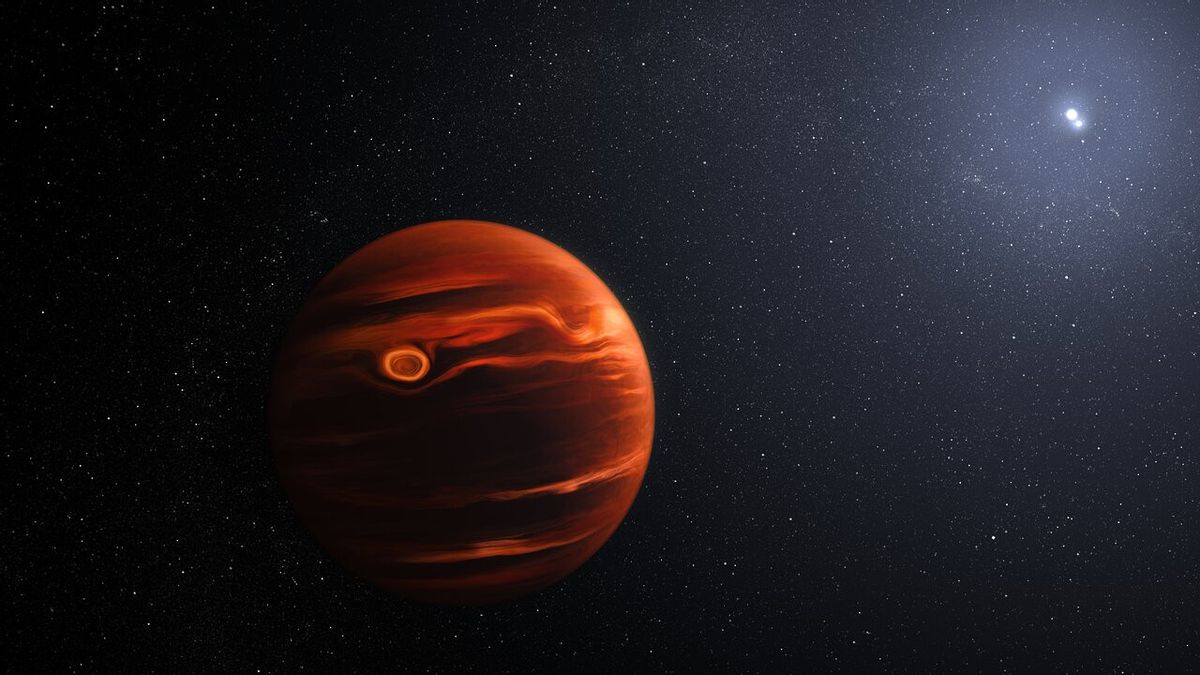JAKARTA - The James Webb Space Telescope has just peered at an exoplanet that has two suns at once, known as VHS 1256 b.
The planet is about 40 light years away and orbits two stars locked in its own tight rotation. It's a strange world, unlike Earth, VHS 1256 b about 19 times more massive than Jupiter.
It took him nearly 10,000 years to circle the parent star. What makes the planet unique, namely its atmosphere consists of circular clouds circling, carrying temperatures up to 830 degrees Celsius.
Having 22 hours of days, clouds in the planet's atmosphere continue to rise, mix and move, carry hotter materials upwards, and push cooler material down.
"VHS 1256 b is about four times as far away from its stars as Pluto's distance from our Sun, which makes it a great target for Webb," said research lead Brittany Miles of the University of Arizona.
"That means the planet's light does not mix with the light from the stars," he added.
The researchers also made a remarkable detection of water, methane, and carbon monoxide with Webb Telescope data, they found evidence of carbon dioxide on the planet.
Carbon dioxide is evidence of the largest number of molecules ever identified on a planet outside the Solar System.
"No other telescope has identified so many features at once for one target. We see a lot of molecules in one spectrum from Webb detailing the planet's dynamical clouds and weather system," said co-author Andrew Skemer of the University of California, Santa Cruz.
Inside planetary clouds, the Webb Telescope detects more large and small silicate dust grains, which are featured in the spectrum. Smooth silicate grains in its atmosphere may be more like small particles in smoke.
Meanwhile, larger grains may be like very small, hot sand particles. VHS 1256 b has low gravity compared to massive dwarf planets, meaning its silicate clouds can appear and remain higher in its atmosphere where the Webb Telescope can detect them.
Another reason the sky is so volatile is the age of the planet. In astronomical terms, it's quite young. Only 150 million years since it was formed and will continue to change and cool for billions of years, as quoted from Metro, Friday, March 24.
Because it is very far from its stars, it will get colder in time, and the sky can change from cloudy to bright. Researchers think this is just the beginning of what they haven't learned about the new planet using Webb Telescope data.
The English, Chinese, Japanese, Arabic, and French versions are automatically generated by the AI. So there may still be inaccuracies in translating, please always see Indonesian as our main language. (system supported by DigitalSiber.id)













